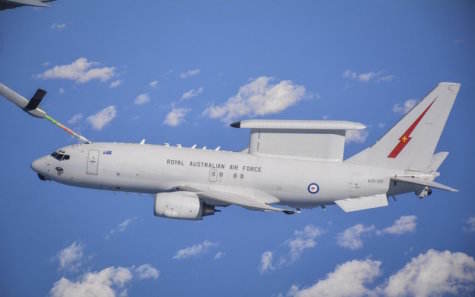Australia's E-7A Wedgetail Airborne Early Warning and Control (AEW&C) aircraft are being upgraded to meet new civil airspace regulations and to improve data storage and broadcast capabilities.
Australia has completed the first phase of upgrades to the RAAF's fleet of E-7A Wedgetail Airborne Early Warning and Control (AEW&C) aircraft. The aircraft are being upgraded to meet new civil airspace regulations and to improve data storage and broadcast capabilities.
Under the $582.5m AIR 5077 Phase 5A contract, Boeing Defence Australia is leading the upgrade in three releases over six years, with support from Boeing’s Airborne Surveillance Command and Control team in the U.S. and a network of suppliers.
The aircraft and associated support systems are being upgraded with new advanced combat identification sensors, tactical data links, communications hardware and encryption system, and mission computing hardware and software upgrades.
Two aircraft are scheduled to receive the full suite of release 1 Phase 5A upgrades by early 2019, which include target identification, mission computing upgrades and increased situation awareness through larger visual monitor displays. The remaining fleet will receive integrated IP Chat communications upgrades into mission computing, data link upgrades, a new wide-band satellite system and dual display upgrades by 2022.
The on-time completion of the first stage of Phase 5A equipped the fleet of six aircraft with satellite position broadcast technology and the latest version of a traffic collision avoidance system. These upgrades will keep the aircraft compliant with mandated changes in the civilian environment.
The Wedgetail upgrade programme is a key element of the Australian Defence Force’s (ADF) strategy of becoming an integrated fifth-generation force.
The E-7A Wedgetail is based on a Boeing 737-700, with the addition of an advanced Multi-Role Electronically Scanned Array (MESA) radar, and 10 mission crew consoles which can track airborne and maritime targets simultaneously.

